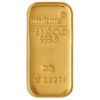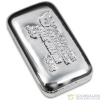Gold has always held a significant place in human history, and its value continues to be a topic of interest in today’s market. Understanding the value of gold, current market trends, investing in 1 oz gold bars, where to buy them, pricing mechanisms, and selling strategies are essential for anyone looking to start or diversify a precious metals portfolio. In this article, we will explore these key aspects of 1 oz gold bars and provide valuable insights for potential investors.
Key Takeaways
- Gold has a historical significance that influences its value in the market.
- Economic indicators and global demand and supply dynamics play a crucial role in determining the current market trends for gold.
- Investing in 1 oz gold bars offers benefits for small-scale gold investments and requires assessing gold bar purity.
- Trusted dealers and mints, as well as online vs. physical retailers, are important considerations when buying 1 oz gold bars.
- Understanding the difference between spot price and retail price, as well as additional costs to consider, is essential for the pricing mechanism of gold bars.
Understanding the Value of Gold

Historical Significance of Gold
Gold’s allure has captivated human societies throughout history, symbolising wealth and power across various cultures and eras. Its significance is deeply rooted, from the gifts of the Magi to the regal emblems of monarchs. The pursuit of gold has spurred global exploration and trade, underpinning the historical phenomenon of bullionism—the belief in precious metals as the cornerstone of economic prosperity.
The legacy of gold as an investment can be traced back to 1967 with the issuance of the first gold bullion coin, the South African Krugerrand. This pivotal moment predated the abandonment of the gold standard by four years, marking a new era for gold enthusiasts. Investment in gold coins and bars has since flourished, driven not only by their financial appeal but also by their aesthetic allure.
"Paper money eventually returns to its true value—zero." – Voltaire
Voltaire’s poignant observation echoes through time, as gold continues to be a steadfast safeguard against inflation and financial instability. The enduring value of gold, both as a cultural icon and a financial asset, remains a testament to its historical significance.
Factors Influencing Gold Prices
The price of gold is a complex interplay of multiple factors, reflecting the delicate balance between supply and demand. A stronger U.S. dollar often leads to lower gold prices, as gold is typically dollar-denominated. Conversely, a weaker dollar can make gold more attractive as an investment.
- Supply Factors: The availability of gold is influenced by the mining industry’s capacity to extract it. As the easier deposits are depleted, mining becomes more challenging, driving up costs. Political stability in mining regions also plays a critical role.
- Demand Factors: Demand is driven by central banks, the jewellery industry, industrial applications, and investors. Gold’s status as a store of value and hedge against uncertainty boosts its appeal during economic turbulence.
Gold’s intrinsic qualities, such as malleability and conductivity, make it indispensable in technology, further influencing its demand. Additionally, investor sentiment, often swayed by geopolitical tensions or financial market risks, can significantly impact gold prices.
Remember, gold is not just a commodity; it’s a form of financial insurance during tough times. Its rarity and the costs associated with mining contribute to its enduring value.
Current Market Trends for Gold

Economic Indicators and Gold
The relationship between gold and economic indicators is a complex one, as gold often behaves differently compared to other assets. It is widely regarded as a safe haven during times of economic uncertainty, and its price can be influenced by a variety of economic factors.
- Inflation: Gold is traditionally seen as a hedge against inflation. As the cost of living increases, the value of gold often rises in tandem.
- Interest Rates: When interest rates are low, gold becomes more attractive as it does not bear interest, unlike other investments.
- Currency Strength: The strength of the US dollar, in particular, can impact gold prices. A weaker dollar often results in higher gold prices.
- Economic Growth: During periods of strong economic growth, gold may not perform as well, as investors seek higher returns elsewhere.
Remember, while gold can act as a financial insurance during tough times, there is never an ideal price to buy or sell gold. Its price represents underlying influences in the gold market, including investor sentiment and confidence in the economy.
Central banks also play a significant role in the gold market, often purchasing gold to hold as part of their reserves. This action is rooted in the historic tradition of gold being both a store of wealth and a hedge against inflation.
Global Demand and Supply Dynamics
The global demand for gold is shaped by a multitude of factors, with central banks, the jewellery sector, industrial applications, and investors playing pivotal roles. Central banks accumulate gold to diversify their reserves and as a hedge against inflation and currency risks. The jewellery industry, particularly in India and China, not only values gold for its aesthetic appeal but also as a traditional form of wealth preservation.
Industrial demand is driven by gold’s unique properties, such as its unparalleled malleability and conductivity, making it indispensable in technology and electronics. Meanwhile, investors often turn to gold-backed ETFs and physical gold as a safeguard against financial market volatility and geopolitical instability.
On the supply side, the capacity to mine and refine gold is critical. However, as the more accessible deposits are depleted, gold mining becomes more challenging, costly, and reliant on technological advancements. The political stability of the regions where gold is mined can significantly impact the supply chain, influencing the market balance.
Tip: When considering gold investments, it’s essential to monitor both demand and supply dynamics, as they can affect the asset’s liquidity and price movements.
Investing in 1 oz Gold Bars

Benefits of Small-Scale Gold Investments
Investing in 1 oz gold bars offers several advantages for those looking to diversify their investment portfolio. Firstly, the liquidity of these smaller units is a significant benefit. Due to their size, 1 oz gold bars are more accessible and manageable for investors, making them highly sought after in the market. This ensures that buying and selling can be done with relative ease, providing investors with a quick way to respond to market changes.
Another key advantage is the affordability of 1 oz gold bars. They represent a more cost-effective entry point into the gold market, allowing investors to purchase gold without committing to larger, more expensive bars. This affordability also enables investors to spread their investment across multiple bars, which can be advantageous for risk management.
- "Remember, diversification is a prudent approach to investment, and small-scale gold bars can be an excellent way to achieve this within the precious metals space."
Furthermore, 1 oz gold bars are convenient for storage and transport. Investors can easily store them in a home safe or a bank deposit box. Their compact size also means that they can be transported without much hassle, should the need arise.
In summary, 1 oz gold bars offer liquidity, affordability, and convenience, making them an attractive option for both novice and experienced investors alike.
How to Assess Gold Bar Purity
When assessing the purity of a gold bar, it’s important to pay attention to the fineness of the gold. The fineness is a measure of the purity of the gold, often expressed as a three-digit number. For example, a gold bar with a fineness of 999 is considered to be 99.9% pure gold. Here’s a table to illustrate different levels of fineness and their corresponding purity:
| Fineness | Purity |
|---|---|
| 999 | 99.9% |
| 995 | 99.5% |
| 990 | 99.0% |
It’s also important to look for the hallmark or assay mark on the gold bar, which indicates the manufacturer’s guarantee of purity and quality. Additionally, always ensure that the gold bar comes with a certificate of authenticity from a reputable refinery, providing assurance of its purity and authenticity.
Tip: When purchasing gold bars, it’s advisable to buy from trusted dealers and mints to ensure the authenticity and purity of the gold.
Where to Buy 1 oz Gold Bars

Online vs. Physical Retailers
When considering the purchase of 1 oz gold bars, it’s important to weigh the advantages of online and physical retailers. Online retailers often offer competitive pricing and a wider selection, while physical retailers provide a more hands-on experience and immediate access to the product. It’s essential to consider factors such as shipping costs, security, and customer service when making this decision.
For a quick comparison, here’s a table outlining the key differences:
| Aspect | Online Retailers | Physical Retailers |
|---|---|---|
| Pricing | Competitive | Varied |
| Selection | Wide | Limited |
| Convenience | High | Moderate |
| Security | Shipping-related risks | Immediate inspection |
Remember, it’s crucial to assess your individual preferences and needs when choosing between online and physical retailers.
Pricing Mechanism for Gold Bars

Spot Price vs. Retail Price
The pricing of gold bars is influenced by the spot price and the retail price. The spot price represents the wholesale interbank price for a 400-ounce gold bar, serving as the benchmark for retail investment gold products. On the other hand, the retail price includes a premium over the spot price, accounting for various factors such as risk, interest, and market demand. This premium is the difference between the spot price and the retail price, which is essential for retail buyers to consider when investing in gold bars. It is important to understand the dynamics of the spot price and the premium to make informed investment decisions. For a more detailed comparison, refer to the table below:
| Price Component | Description |
|---|---|
| Spot Price | Wholesale interbank price for a 400-ounce gold bar |
| Retail Price | Spot price plus a premium to account for various factors |
Investors should carefully evaluate the spot price and the premium to determine the true value of their gold bar investments. Understanding the relationship between these prices is crucial for making strategic investment choices.
Additional Costs to Consider
When purchasing 1 oz gold bars, it’s important to consider the additional costs associated with insurance and delivery. For orders under £1500, there is no additional fee for insurance, but for orders over £1500, a fee is charged to cover the increasing costs of insurance. The fee is £1 for every £1500. Additionally, fully insured delivery is offered on all special delivery options, and the cost of this insurance is passed on to the customer. It’s important to note that prices for gold bars are based on the live precious metal price, and they will be fixed once the item is added to the basket. However, for bullion items, prices are calculated on low premiums over their precious metal content and not solely for aesthetic purposes. Therefore, some products may have edge knocks and/or marks, which do not alter the specifications of the coins.
Selling 1 oz Gold Bars

Finding the Right Time to Sell
As an investor, it is important to remember one vital fact about gold; it is a store of value and hedge against uncertainty. This makes gold the only proven financial insurance that can protect your financial wellbeing during tough times. Therefore, focusing on the fundamentals in the gold market including its rarity and limited production, as well as the underlying influences in the gold market such as investor sentiment and confidence in the economy, will help you make educated decisions on the best time to buy and sell metals.
Tip: There is never an ideal price to buy or sell gold. The gold price represents underlying influences in the gold market which includes investor sentiment and confidence in the economy as well as supply and demand dynamics.
Where to Sell Your Gold Bars
Once you’ve decided to part with your 1 oz gold bars, finding the most suitable venue to sell them is crucial. In London, for example, there are numerous dealers who offer competitive rates for gold bars, whether they are minted, cast, or even scrap gold. It’s important to research the market and compare offers from different buyers to ensure you receive the best price.
High-street jewellers, pawnshops, and dedicated gold buying outlets are common places to sell gold bars. However, selling online can often yield better returns due to the competitive nature of the market. Here’s a simple checklist to follow when preparing to sell your gold bars:
- Verify the current gold spot price
- Get your gold bar appraised
- Compare offers from multiple buyers
- Read reviews and check the credibility of the buyer
- Decide on the payment method (e.g., cash, bank transfer)
Tip: Always insist on a transparent process and avoid buyers who charge hidden fees or commissions. Remember, the price shown online should be the price you receive.
Conclusion
In conclusion, investing in gold bars can be a valuable addition to a diversified investment portfolio. With the current market offering 1 oz gold bars at competitive prices, it presents an opportunity for investors to secure a tangible asset with potential for long-term growth. The gold spot price and its dynamic nature make it an intriguing option for those seeking stability and potential returns in the precious metals market. Consider exploring the range of 1 oz gold bars available to make an informed investment decision.
Frequently Asked Questions
What factors affect the price of a 1 oz gold bar?
The price of a 1 oz gold bar is influenced by various factors including global economic conditions, inflation rates, currency fluctuations, and supply and demand dynamics. Additionally, geopolitical events and market speculation can also impact gold prices.
How is the price of gold determined in the market?
The price of gold is primarily determined by the spot gold price, which is the wholesale interbank price for a 400-ounce gold bar for delivery in two business days. It acts as the benchmark for all retail investment gold products and fluctuates based on market forces.
What are the benefits of investing in 1 oz gold bars?
Investing in 1 oz gold bars allows individuals to start or diversify their precious metals portfolio with a smaller and more affordable quantity. These bars are easier to trade, store, and manage compared to larger bullion, and they retain their value over time.
Where can I purchase 1 oz gold bars?
1 oz gold bars can be purchased from trusted dealers, mints, and online retailers. It’s important to research and choose reputable sources to ensure the authenticity and purity of the gold bars.
Are there any additional costs when buying gold bars?
Yes, when purchasing gold bars, you may incur additional costs such as dealer premiums, shipping fees, insurance, and potential storage costs if you choose to store the bars in a secure facility.
How can I sell my 1 oz gold bars when I decide to liquidate?
To sell your 1 oz gold bars, you can approach reputable gold dealers, mints, or online platforms that specialise in buying back precious metals. It’s crucial to time the sale to maximise returns, taking into account current market prices and demand.











